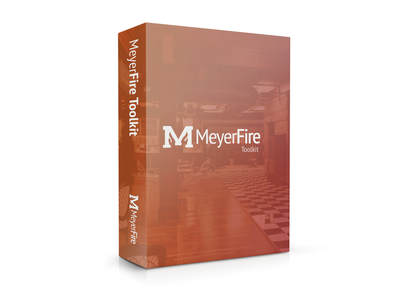|
We are working on a project where a feed main is running through an unsprinklered space to get to a sprinklered area. I've heard that sprinkler pipe needs to be protected by sprinklers so we are trying to figure out if this is an actual requirement or not.
We are talking about putting uprights on the feed main in the unsprinklered area to protect the pipe but I can't find anything in NFPA 13 that actually requires the pipe to be protected. Does anyone know if this is a requirement or not? Sent in anonymously for discussion. Discuss This | Submit Your Question | Subscribe
7 Comments
Franck
1/26/2021 09:13:44 am
You will find the answer here in NFPA 13 (2019).
Reply
Franck
1/26/2021 09:20:01 am
In other words, if you're pipe is running in an unsprinklered area where there is (and will never be) no fire exposure hazard, then it might be acceptablme by the AHJ not to provide a sprinkler protection.
Reply
Casey Milhorn
1/26/2021 09:29:27 am
Oldie but a goodie. Haven't looked that one up in awhile so was curious what the newer standard says. This is what I found in the appendix A8.1.
Reply
CJ Bonczyk
1/26/2021 09:31:31 am
As mentioned by Frank previously, NFPA 13 2019 16.4.3 addresses this issue. I would advise to consult with the AHJ as to what will be deemed an acceptable means of protection based on the adjacent occupancy classification. Ensure sure the pipe is protected based on the existing occupancy hazards, and try to get something in writing in the event it changes at some point in time. We have done this many times in warehouses and we have received various answers from all AHJ's. We have even had to insulate and heat trace because the adjacent tenant space owner was not providing enough heat in the facility.
Reply
Keith A Heckler
1/26/2021 09:46:30 am
To add to the conversation, the 2019 NFPA 13 provides a statement "If automatic sprinkler protection designed for the hazard involved is provided, the potential for main damage is minimized".
Reply
Keith A Heckler
1/26/2021 09:47:23 am
Forgot to say Handbook
Reply
Willie Nel
1/26/2021 12:38:17 pm
Lines conveying liquid being above 4 inches should not be damaged by a fire scenario as the liquid will dissipate the temperature. Obviously should the liquid be flowing in the line, the line would not fail either. Even over pressure scenarios should have a very limited (bending) effect on lines but pressurized flame impingement is a different ball game. I would, in any case, investigate the use of fire proofing, maximum 1 hour, instead of sprinklers to protect such a line.
Reply
Leave a Reply. |
ALL-ACCESSSUBSCRIBESubscribe and learn something new each day:
COMMUNITYTop June '24 Contributors
YOUR POSTPE EXAMGet 100 Days of Free Sample Questions right to you!
FILTERS
All
ARCHIVES
July 2024
PE PREP SERIES |
MeyerFire
- Blog
- Forum
-
THE TOOLKIT
- SUBMIT AN IDEA
- BACKFLOW DATABASE*
- CLEAN AGENT ESTIMATOR*
- CLOUD CEILING CALCULATOR
- DOMESTIC DEMAND*
- FIRE FLOW CALCULATOR*
- FIRE PUMP ANALYZER*
- FIRE PUMP DATABASE*
- FRICTION LOSS CALCULATOR
- HANGER SPACER*
- IBC TRANSLATOR*
- K-FACTOR SELECTOR*
- NFPA 13 EDITION TRANSLATOR ('19 ONLY)
- NFPA 13 EDITION TRANSLATOR ('99-'22)*
- LIQUIDS ANALYZER*
- OBSTRUCTION CALCULATOR
- OBSTRUCTIONS AGAINST WALL*
- PITOT CONVERTER
- PLUMBING FIXTURE COUNTS
- QUICK RESPONSE AREA REDUCTION
- REMOTE AREA ANALYZER*
- SPRINKLER DATABASE*
- SPRINKLER FLOW*
- SYSTEM ESTIMATOR*
- TEST & DRAIN CALCULATOR
- THRUST BLOCK CALCULATOR
- TRAPEZE CALCULATOR
- UNIT CONVERTER
- VOLUME & COMPRESSOR CALCULATOR
- WATER STORAGE*
- WATER SUPPLY (US)
- WATER SUPPLY (METRIC)
- UNIVERSITY
- PE Exam
- LOGIN
- PRICING
- OUR CAUSE

MeyerFire.com is a startup community built to help fire protection professionals shine.
Our goal is to improve fire protection practices worldwide. We promote the industry by creating helpful tools and resources, and by bringing together industry professionals to share their expertise.
MeyerFire, LLC is a NICET Recognized Training Provider and International Code Council Preferred Education Provider.
All text, images, and media Copyright © 2016-2024 MeyerFire, LLC
We respect your privacy and personal data. See our Privacy Policy and Terms of Service. The views, opinions, and information found on this site represent solely the author and do not represent the opinions of any other party, nor does the presented material assume responsibility for its use. Fire protection and life safety systems constitute a critical component for public health and safety and you should consult with a licensed professional for proper design and code adherence.
Discussions are solely for the purpose of peer review and the exchange of ideas. All comments are reviewed. Comments which do not contribute, are not relevant, are spam, or are disrespectful in nature may be removed. Information presented and opinions expressed should not be relied upon as a replacement for consulting services. Some (not all) outbound links on this website, such as Amazon links, are affiliate-based where we receive a small commission for orders placed elsewhere.













 RSS Feed
RSS Feed
